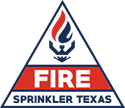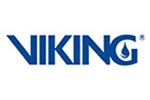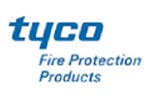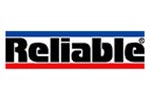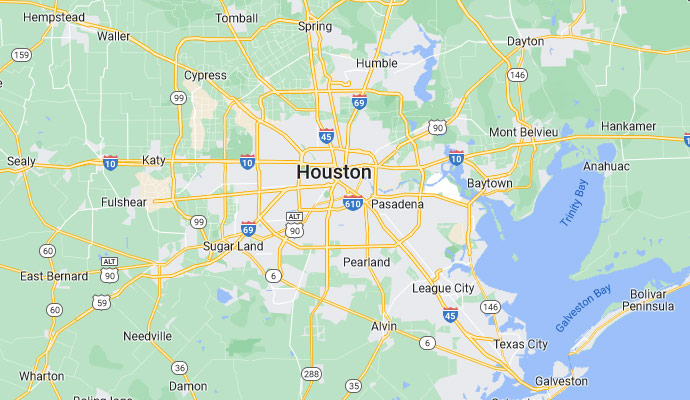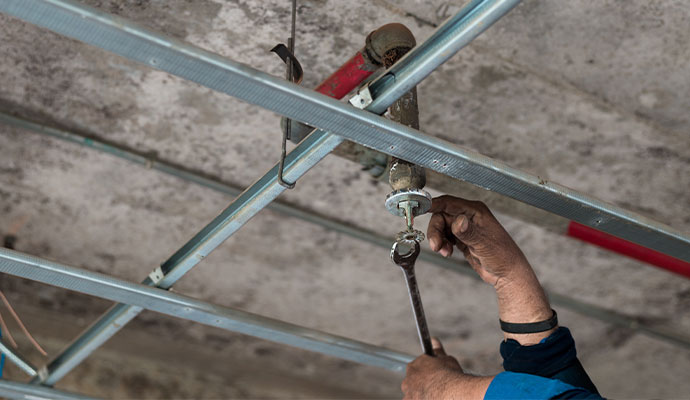
Fire Sprinkler Inspection, Testing and Maintenance in Houston, TX
The National Fire Protection Association recommends that all Fire Sprinkler Systems to be Inspection, Testing and Maintenance to be performed by a certified RME-I Quarterly, some parts of the system could be inspected Annually. Fire Sprinkler Texas has the certified inspector to take care of any type of inspection, testing and maintenance in Houston, Katy, Spring, Sugar Land, Richmond, Clear Lake, Missouri City and Webster , Texas.
Call Now to Schedule Fire Sprinkler Inspection by Fire Sprinkler Texas at 281-603-0304
These are the Fire Sprinkler System Inspection Checklist:
Monthly
The following monthly inspections can be performed by facility staff:
Visually inspect control valves to ensure that they are:
- In the normal open position.
- Accessible.
- Properly sealed.
- Locked and/or supervised.
- Free from leaks.
- Provided with appropriate signage identifying the portion of the system they control.
- Visually inspect gauges on wet pipe systems to verify that they are in good condition and that normal water pressure is being maintained.
- Visually inspect gauges on dry pipe systems to verify that they are in good condition and that normal air and water pressure are being maintained.
Note: Where air pressure is not supervised at a constantly attended location, these gauges need to be inspected on a weekly basis. Fire Sprinkler System Maintenance and Testing.
Quarterly
1. The following quarterly inspections are in addition to those required monthly and can be performed by facility staff:
- For hydraulically designed sprinkler systems, inspect the hydraulic nameplate to verify that it’s securely attached to the sprinkler riser and is legible. Note: Most newly installed fire sprinkler systems are now hydraulically designed. When in doubt, ask your sprinkler contractor.
- Inspect alarm devices to verify that they are free of physical damage.
- Inspect fire department connections to verify that.
2. With proper training the following quarterly tests can be performed by facility staff:
- Test the waterflow alarm on wet pipe sprinkler systems by opening the inspector’s test connection. This simulates the opening of a sprinkler head. Note: Where freezing weather conditions or other circumstances prohibit the use of the inspector’s test connection, the bypass connection is allowed to be used.
- Test the waterflow alarm on dry pipe sprinkler systems by using the bypass connection. Caution: Opening the inspector’s test connection can cause the system to trip accidentally, allowing the pipes to fill with water and creating a potential for a serious freeze problem.
Annually
1. In addition to the monthly and quarterly inspections and tests, NFPA 25 has very detailed and specific inspection, testing and maintenance services that need to be performed on an annual basis. Because of their complexity, and to comply with the state law, these services must be performed by a licensed sprinkler contractor and would include such things as:
- An inspection of the facility’s supply of spare sprinkler heads to ensure that there are a minimum of two sprinklers of each type and temperature rating and that there is a sprinkler wrench for each type of sprinkler.
- A check of all sprinklers, hangers, pipe and fittings.
- Testing of the main drain.
- Testing of any antifreeze solution used.
- Testing and maintenance of valves Dry pipe sprinkler systems require some additional testing and maintenance. Priming water level, low pressure alarms and quick-opening devices must be tested. An annual trip test is also required.
Long Term
- A full flow trip test is required for dry pipe sprinkler systems every 3 years [see NFPA 25(98), Sec. 9-4.4.2.2.1 or NFPA 25(02), Sec. 12.4.4.2.2.2].
- Sprinkler system gauges typically have a life expectancy of 10 to 15 years. As a result, these gauges must be replaced every 5 years or tested every 5 years by comparison to a calibrated gauge. Fire Sprinkler System Maintenance and Testing Page 5 Gauges not accurate to within 3 percent of the full scale must be recalibrated or replaced [see NFPA 25(98), Sec. 2-3.2 or NFPA 25(02), Sec. 5.3.2].
- System check valves must be inspected internally every 5 years to verify that all components operate properly, move freely and are in good condition [see NFPA 25(98), Sec. 9-4.2.1 or NFPA 25(02), Sec. 12.4.2.1].
- The 1998 edition of NFPA 25 has specific requirements dealing with testing of sprinkler heads that have been in service for an extended period of time [see NFPA 25(98), Sec. 2-3.1]. These requirements, which emphasize the importance of knowing the history of your facility’s fire sprinkler system, would include.
- Sprinklers manufactured prior to 1920 must be replaced.
- Representative samples of solder-type, extra-high temperature sprinklers (i.e. 325° -375° F) that are exposed to semi-continuous or continuous maximum allowable ambient temperature conditions are required to be tested at 5 year intervals. These would be sprinklers you might find, for example, in your boiler room and would have red-colored frame arms.
- Sprinklers manufactured using fast response elements that have been in service for 20 years are required to be tested. Retesting is required at 10-year intervals. Note: The first residential sprinkler was listed for service in 1981 and the first quick response sprinkler was listed for service in 1983.
- Sprinklers that have been in service for 50 years must be replaced. An alternative is to submit representative samples from one or more sample areas to a recognized testing laboratory acceptable to the AHJ for testing. Such tests are required to be repeated at 10-year intervals. e. Sprinklers in service for 75 years are required to be replaced or representative samples submitted for testing. Retesting is then required at 5-year intervals.
-
The 2002 edition of NFPA 25 has the following additional testing requirements [see NFPA 25(02), Sec. 5.3.1]:
- a) Dry sprinklers that have been in service for 10 years must be tested or replaced. They must be retested at 10-year intervals.
- b) Where sprinklers are subjected to harsh environments, including corrosive atmospheres and corrosive water supplies, the sprinklers must be replaced or representative samples tested every 5 years.
Note: “Harsh environments” have been interpreted to include areas exposed to outside weather (e.g. sprinklers installed under exterior canopies) and cold storage areas (e.g. coolers and freezers).
Fire Pumps
- Fire pumps, where present, are also subject to very specific inspection, testing and maintenance requirements to help ensure that they will function properly when needed. Some of the basics include.
- Fire pumps must be inspected weekly to verify that the pump assembly appears to be in operating condition and is free from physical damage [see NFPA 25(98), Sec. 5-2 or NFPA 25(02), Sec. 8.2 for specific conditions that must be checked].
- Fire pump assemblies must be tested weekly [see NFPA 25(98), Sec. 5-3.2 or NFPA 25(02), Sec. 8.3 for specific observations and adjustments that need to be made while the pump is running].
- An annual test of the fire pump assembly is required. This test must be conducted under minimum, rated and peak flows of the pump [see NFPA 25(98), Sec. 5-3.3 or NFPA 25(02), Fire Sprinkler System Maintenance and Testing Page 6 Sec. 8.3.3 for specific visual observations, measurements and adjustments that need to be made while the pump is running and flowing water under the specified output condition].
- NFPA 25 requires that a preventive maintenance program be established on all components of the pump assembly in accordance with manufacturer’s recommendations [see NFPA 25(98), Sec. 5-5 or NFPA 25(02), Sec. 8.5]. Note: NFPA 25 provides a helpful table to use in the absence of manufacturer’s recommendations for preventive maintenance [see NFPA 25(98), Table 5-5.1 or NFPA 25(02), Table 8.5.3].
Documentation Requirements
Just as important as conducting required inspections, testing and maintenance is documenting the fact that they occurred. Both NFPA 13 and NFPA 25 require that these services be properly recorded. What follows is a brief synopsis of some of the major documentation requirements you need to be aware of.
Inspection, Test and Maintenance Service (ITM) Tag.
- After a new installation or a scheduled inspection, testing and maintenance (ITM) service, all portions of an ITM tag must be completed in detail, indicating the ITM service was performed according to the adopted standards, and the tag must be attached to the respective riser of each system.
- After any ITM service, the inspector must complete and attach an ITM tag, and if impairments are found, the inspector must attach the appropriate yellow or red tag in accordance with the procedures in this sub chapter.
- A new ITM tag must be attached each time an inspection, testing and maintenance service is performed.
- ITM tags shall remain on the system for five years after which time they may only be removed by an authorized employee of a registered firm. An employee of the state fire marshal's office or an authorized representative of a governmental agency with appropriate regulatory authority may remove excess tags at any time.
- ITM tags may be printed for a multiple period of years.
- ITM tags must be light blue in color, 5 1/4 inches in height, and 2 5/8 inches in width.
- ITM tags shall contain the following information in the format of the sample tag in subsection of this section.
